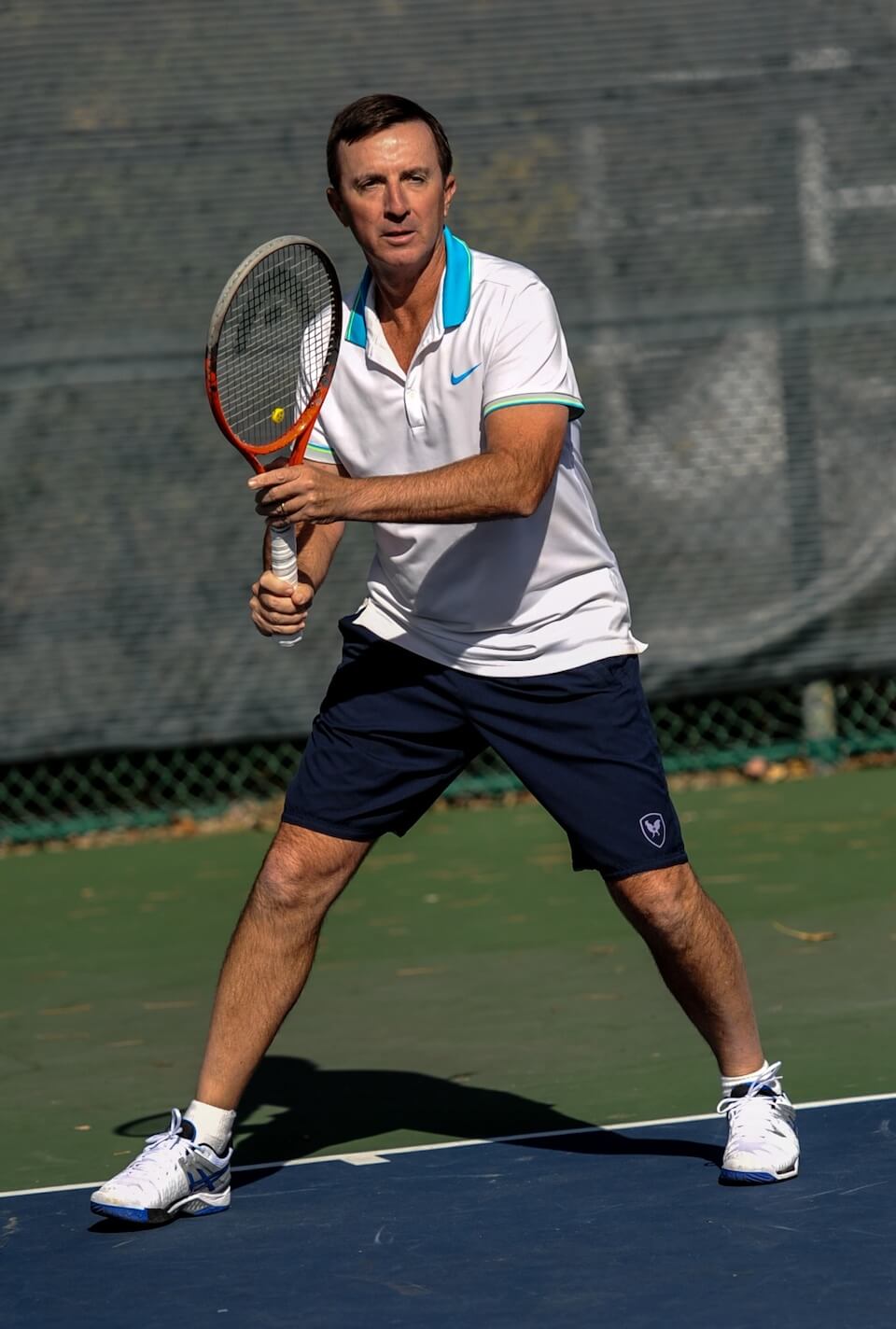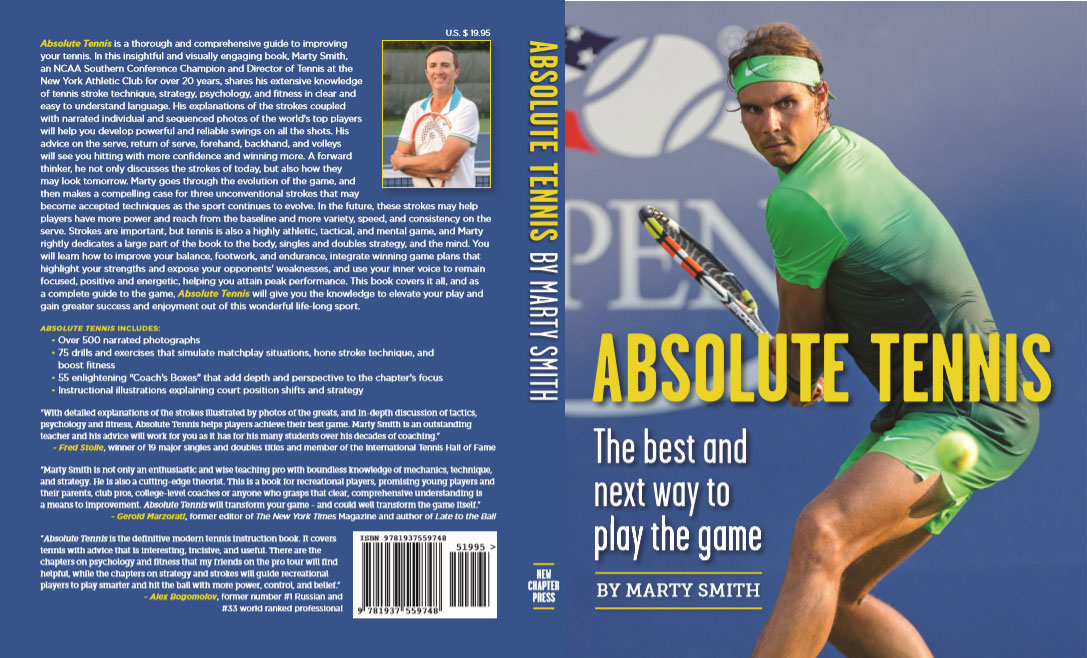TENNIS IS MY LIFE’S PASSION and work. The sport has been so
generous to me, and I am grateful that I had the opportunity to
share my knowledge and experience with you in
Absolute Tennis. Whatever your motivation for reading the
book, my hope is that you learned a lot, are enjoying your
tennis more, and are playing better than ever.
Of course to raise your game, the knowledge you gained from this
book has to be combined with hours of practice. Nothing
worthwhile comes easy, and this is particularly true in a
skillful game like tennis where small deviations — like being a
degree or two off with the racquet face — can result in an
error. Improving your game takes mindfulness, commitment, and
resolve. I urge you to be patient with the process; you will be
very glad in the long run.
Remember too that it is important not to be overly critical of
yourself. Judging yourself too harshly will hurt rather than
help you. Instead, practicing and playing matches with a sense
of gratitude and a smile will lead to more time on the court and
faster improvement. The right internal approach is to salute
your dedication and savor your progress along the way; raising
your level of play is an accomplishment of which you should be
very proud.
If you hit a speed bump during your training, which everyone
invariably does, take a step back and remind your yourself of
the many positive qualities of tennis: how its incredible
variety makes every shot different and every opponent unique;
how its innate malleability leaves you free to put your own
stamp on each ball struck; and how it can be very individual,
but at the same time permits you to play doubles or in a league
and feel part of a team. It is also a sport that vindicates
self-belief and activates the mind to think deeply and problem
solve. As Andre Agassi once said, “There can be thousands of
people watching or you could be in your back yard, and either
way, you are dealing with simple elements that cause you to ask
yourself to believe when you might not. To ask yourself to find
a way, when you don’t think there is. It’s a great sport and
very symbolic of life and prepares you for life.”(2) Tennis
offers a lot, and I think it is helpful to appreciate this as
you train and work on your game.
Playing better is well within your grasp, and if you do, the
rewards are notable. There’s the joy of winning more often and
the satisfaction derived from hitting skillful shots that were
not previously part of your game. Also, playing better usually
results in playing more often and you reaping the health
benefits that stem from increased time on the court. I know you
can improve and experience these rewards: I’ve seen it happen
countless times in my life. With constructive stroke repetition,
tactical knowledge, and a mind and body in good shape, it will
happen.
For those of you learning a new stroke or beginning the game,
don’t forget to use progressions to structure your practice
sessions. There’s no question that swing technique is learned
faster and cemented stronger when tennis training is broken down
into gradually more challenging steps. Try not to be in a hurry
to jump through the progressions. Wait until you are competent
and confident executing each progression before moving on to the
next one. Also, remember to keep the proper order of learning —
that is, consistency, placement and then power. Consistency is
the first principle; it slows down the swing to assist the
grooving of proper stroke mechanics, encourages repetition, and
reinforces the winning match philosophy of keeping errorsto a
minimum. After consistency comes placement, which improves as
you learn the correct timing of the swing and which part of the
ball needs to be struck to direct the ball. Power is the third
variable. It is the most fun part of the learning process, but
at the recreational level, it is also the least important. My
advice is don’t be enticed by power’s glamor until you have good
consistency and placement in your game first.
And what about a key question raised in the book — the future?
Compare the speed of the game 40 years ago to today. What will
it look like 40 years from now? Tennis players will continue to
get taller and faster, and the equipment and training methods
will keep improving. With these advancements, will the extra
power, reach, and time of Ambitennis lead to it becoming an
accepted style of play? Will future players curve the ball
rightward with reverse serves or “spike” their volleyball serve?
Will the “best of both worlds” hybrid backhand become a
recognized shot? No one knows but the advancements certainly
will lead to some changes. Whatever happens, I am excited,
curious, and ready for the future, and my advice to you is to be
on the lookout and embrace the changes too. It is always better
to lead and be in front of the curve than follow and play
catch-up.
 Marty Smith has been the Director of Tennis for more than
20 years at the famed New York Athletic Club, the No. 1-rated
athletic club in the United States. A native of Australia, he was
a top five-ranked Australian junior players and was the two-time
Southern Conference singles and doubles champion at the University
of Tennessee at Chattanooga. He graduated from UTC and also
received his MBA at St. Thomas University in Miami. He is a
resident of Pelham, NY.
Marty Smith has been the Director of Tennis for more than
20 years at the famed New York Athletic Club, the No. 1-rated
athletic club in the United States. A native of Australia, he was
a top five-ranked Australian junior players and was the two-time
Southern Conference singles and doubles champion at the University
of Tennessee at Chattanooga. He graduated from UTC and also
received his MBA at St. Thomas University in Miami. He is a
resident of Pelham, NY.
